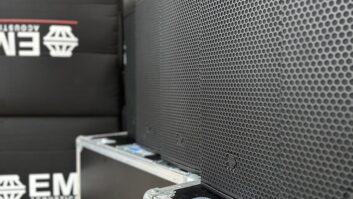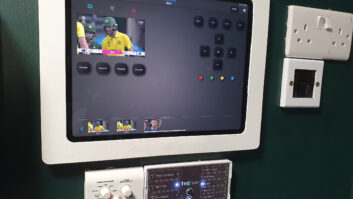How did you come to be working in the professional audio business?
I always had a great love of music, and that led me into working on live performances – handling PA, mixing FOH, etc. Eventually, I decided to take my interest in sound and audio a stage further, and went to study Audio Technology and Acoustics at the University of Salford, from where I graduated with a BSc honours degree in 2001. Not long after that, I met and fell in love with a Swedish woman and that led me to relocate here, to Uppsala, during 2005. The job market here is pretty tough – people tend to have a job for life and no one moves around much – and so it quickly became clear to me that I needed to establish my own business. I initially worked as Steve Liddle Consulting before renaming the company Springwell Audio in 2006.
Thinking back to those early days, was there a particular project that really helped to determine the direction of your career?
Working on the new Wembley Stadium was definitely very important for me. It was shortly after I moved to Sweden, and through a good contact I had with the designer of the venue’s audio systems, I was asked to head up the testing and commissioning process on behalf of project installer LBI (Live Business International). It was a four-month project in the latter half of 2005 – I flew to London every Sunday evening and then back to Sweden on the Friday. It proved to be a major help in securing future contracts: not only did I work on one of the biggest venues in the world, I was also required to have a detailed knowledge of the design and know how every single aspect of the system worked. There were 6,000 speakers to be tested, so it took a few months to get around them all!
Shortly after that you established Springwell Audio and now have an extensive roster of clients for your electroacoustics services. What are general activity levels like in the Swedish market right now?
The summer in Sweden is slow – half the workforce tends to disappear to Thailand or other ‘guaranteed sunshine’ places! – and the months after Christmas are similar. But personally speaking, I have been very lucky. From prior to changing the name of the company in 2006, and through all the time since, I have established some really good customer relationships – the cruise ship market provides a lot of regular work, and I have also been collaborating on some larger projects with Audio Data Labs’ Ingemar Olsson, who is one of Sweden’s leading acoustic consultants and has more than 35 years’ experience in designing studio control rooms, among other things. Opportunities keep appearing so, yes, the market is definitely pretty active at the moment.
While you do undertake some hands-on installation work yourself, you have also collaborated extensively with leading systems integrators. What are the factors that any good integrator should always take into account?
The user interface is absolutely crucial – you need to find out who is going to use the system and whether or not they are qualified. In Sweden, we often talk of a ‘caretaker panel’ because there are a lot of venues – for example, auditoria in educational facilities – where there is a simple need to be able to turn on the microphones or increase/decrease the volume, and that’s about it. There shouldn’t be any need to operate a mixing desk to get sound for a conference. A good integrator should consider that and design from the interface.
It’s also very important for integrators to avoid ‘project creep’, whereby the design is never finalised and keeps changing over a long period of time. Sometimes this tendency can lead to projects never actually beginning; you can be two years down the line without work having started because the project leader is not very well organised. It’s really important for everyone involved to do the brainstorming at an early stage, plan for spare capacity, and make the system expandable. Then once the design is finalised, you need to get on with the job and deliver on time.
Finally, if you are going to collaborate, the other person has to be receptive to your ideas. I have encountered people who basically just want someone to do all the running around. At this stage in my career, I have extensive experience and am able to bring a lot to any given project. Now, it might be that the collaborator eventually dismisses your ideas, but they should at least listen to and acknowledge them! A good collaborator is open to the energy of the group and always remembers that the client is the most important consideration.
In what ways do you expect your work to change in the future?
I would like to do more consulting work. In my view, that is a weak point in Sweden – electroacoustics usually involves larger-scale [venues] and can fall into the remit of the electrical contractor. I have undertaken EASE modelling on some projects and found that the [electroacoustic] spec runs to just two paragraphs – no real scope of works or target, no background noise data, no information at all. You’ll find that an electrical contractor has a preferred supplier and there will be a turnkey solution, and that’s it.
In the consulting work I have done, there are very extensive specs that make it clear what we want, albeit without referring to specific brands. This makes the bidding process a lot clearer and fairer, and ensures that customers know what they are getting. Brand-wise, the major players in Sweden include BSS, Peavey MediaMatrix, Biamp and Bosch, but one of the strengths of my company is that we are not tied to any specific brands; we are completely independent. I know what the good products are, but I don’t have a favourite and I am free to employ the most appropriate solutions for any given project.







